Wadawurrung woman and cultural consultant, Bonnie Chew, and regional art therapist and teacher, Karryne Hearn, talk about working together in their project for secondary school students in Ballarat.
Can you please introduce yourself and anything you like readers to know about you?
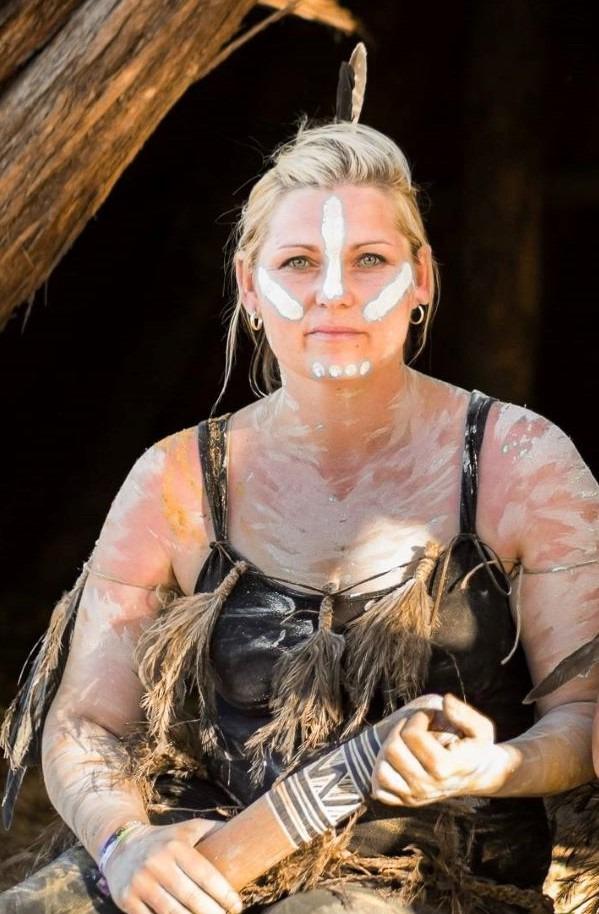
Bonnie – My name is Bonnie Chew and I am the Director of Mirriyu Cultural Consulting, and a proud Wadawurrung woman, from Victoria, with extensive knowledge in Mental Health First Aid, Aboriginal Cultural Heritage Management, Reconciliation, Incarceration, Genealogy, Health and Education.
I currently hold three Ministerial appointed positions, serving as a Council Member of the Victorian Aboriginal Heritage Council, Indigenous Independent Prison Visitor and Indigenous Heritage representative of Victoria on the Victorian Public Records Advisory Council. My business Mirriyu Cultural Consulting offers professional education and consulting services throughout Australia for all organisation types.
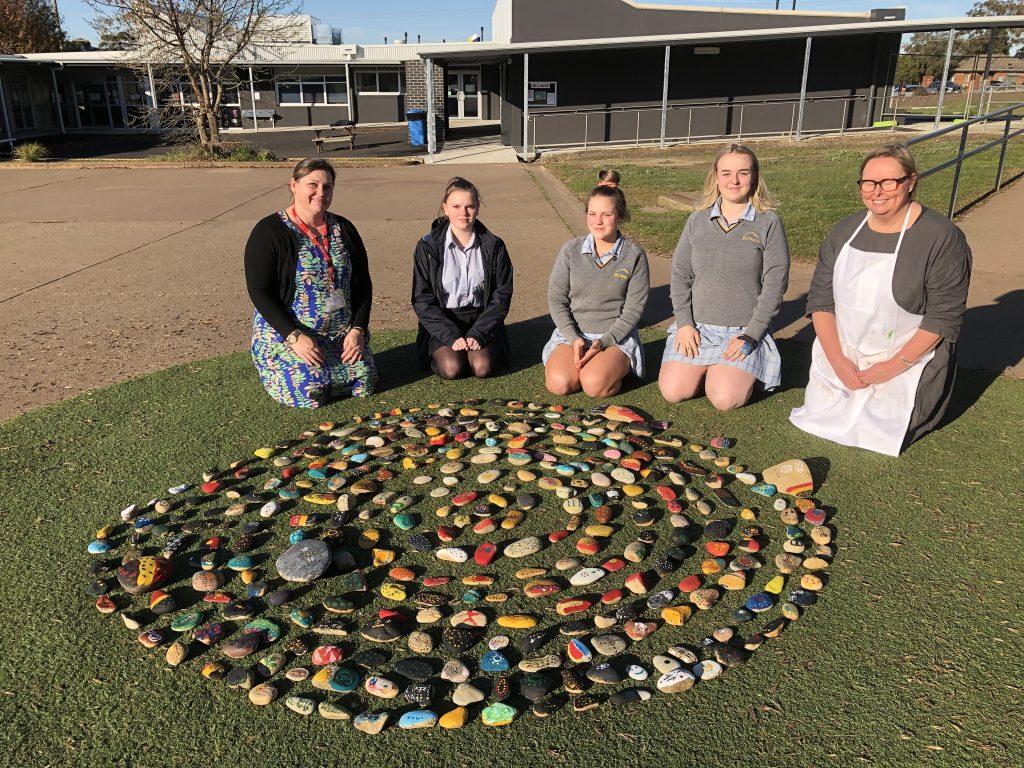
Karryne – Hi, my name is Karryne Hearn (AThR) secondary school teacher from Mount Rowan Secondary College, Wendouree. I have a position of responsibility as the Koorie Curriculum Coordinator.
Can you tell us how the rock painting project began? What did you imagine in the beginning? How did the process unfold, where there any unexpected moments or obstacles to overcome?
“how do I paint trauma, and me coming out the other end”. This project was now beyond a mandala, it was a therapeutic expression of student’s feelings in a non-invasive manner.
Bonnie Chew
Bonnie – As a Wadawurrung woman, I was approached by Karryne Hearn, an art teacher/practitioner from Mount Rowan Secondary College, which sits on the land of my People, to co-facilitate an Aboriginal rock painting project. As a sole trader I can hand pick my projects, this project sung to my heart and therefore I accepted. It was Karryne’s beautiful vision of creating a whole school mandala in the name of Reconciliation, in which Karryne and I were able to create a safe space for students to create organically.
All students and many teachers had the opportunity, at staggered time slots, to come and go from the dedicated space throughout the day. Students were given a brief introduction to generic Aboriginal symbols used in many parts of Australia and cultural protocols. They were encouraged to paint their own story or something which held meaning to them, on a rock. I was a proud community member to see an Indigenous student step up and engage her peers.
To be honest I thought this was going to be a lovely project although when faced with questions such as “how do I paint separated parents”, “how do I paint a person who has died”, “how do I paint trauma, and me coming out the other end”. This project was now beyond a mandala, it was a therapeutic expression of student’s feelings in a non-invasive manner. Throughout the day I had goose bumps and held back happy and sad tears.
Three Indigenous students were featured in the local newspaper, I was delighted to see these young women standing proud with their beaming smiles, showcasing their art works.
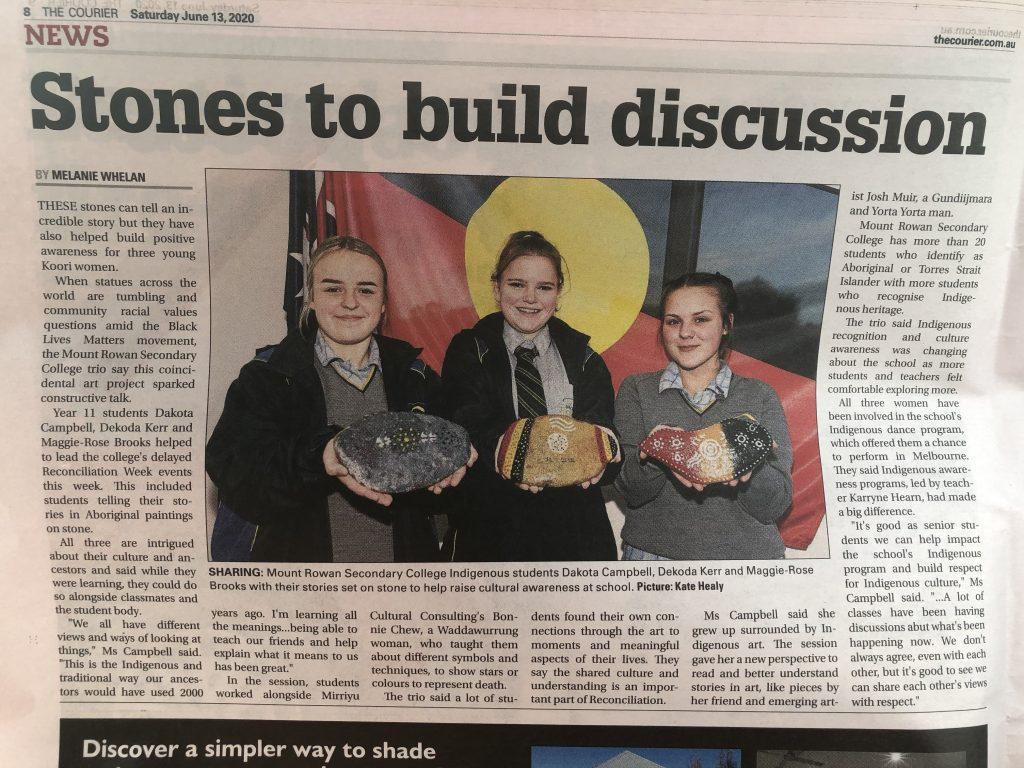
Karryne – When it was decided that students from year 7-10 were returning to school after a prolonged period of time working from home there needed to be a variety of ways to reengage students back at school. Reconciliation Week provided an opportunity for students to engage in a cultural understandings activity run by cultural First Nations woman Bonnie Chew from Mirriyu Cultural Consulting.
Students heard from Bonnie about the cultural importance of colors used particularly for mourning and the use of symbols. Students sat on the floor to paint referencing indigenous symbols for sitting / yarning for males and females.
I thought we would reference the waterhole / gathering symbol of concentric circles in the placement of rocks to develop an installation of painted rocks by all students and staff approx 400 rocks. The painted rocks were and became an acknowledgement of Mount Rowan’s recognition of Reconciliation Week and relationship with First Nations, Wadawurrung people.
Initially concerned about Bonnie mentioning the Colour combination of green on black as that of mourning, worried students may not use this arrangement respectfully. Dakota Campbell stepped up and began to collaborate as a relationship developed between the two. Dakota referenced culturally significant rock art that she was familiar with to the student body and explained how the painting was a very real way to represent individual personal stories. This was understood by students who subsequently asked for particular ways to represent their own relationships

What roles do the arts have to play in abolishing racism and achieving a true reconciliation in Australia?
Through art we can share our feelings, collaborate, and educate. Can art abolish racism? My belief is art can assist in informing its audience, although it is only one piece of the puzzle.
Bonnie Chew
Bonnie – In a previous life I worked with Indigenous inmates of Langi Kal Kal Prison and Hopkins Corrections Centre to create art exhibitions, giving voice in varied mediums; painting, pen drawing, poems, artefact making and digital media. It was this project where I was first able to gain an understanding of the importance to these men through the therapy of art, story telling. Many of the men had never participated in the arts prior to prison and said it gave them a connection to their Country, feeling of belonging and a sense of pride giving back to community. Art can tell stories either with impact or subtle means. Through art we can share our feelings, collaborate, and educate. Can art abolish racism? My belief is art can assist in informing its audience, although it is only one piece of the puzzle.
Karryne – The painting of rocks enable a visceral experience of our First Nations culture as a lived experience. Students sat with the rocks during the day and developed their own discussions. Pride was felt by non indigenous students with our Koorie student’s culture and our identifying and non identifying Koorie students actually owned the day. They opened their hearts and held us – letting us see and feel their story telling.
How can non-indigenous Australians be part of this movement?
Bonnie – Connect with your local community, attend special events, listen carefully and with intent, collaborate and do not be afraid to pull up your sleeves.
Karryne – Non indigenous Australians need to become historical truth tellers, sitting with the discomfort of the past. We need to become informed and curious about the ways of the various First Nations cultures. We need to understand intergenerational trauma and its significant impacts. Cultural people need to be sought for their opinions/ ideas, heard and understood without judgement or assumptions.
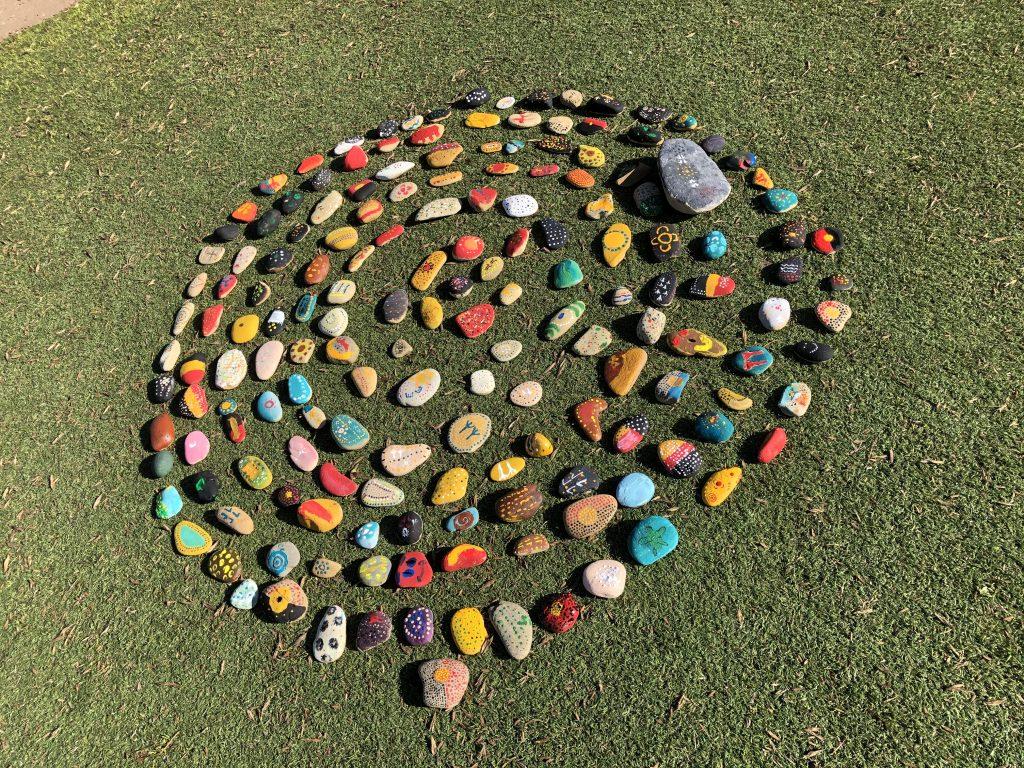
Thank you Bonnie and Karryne for sharing the story of this project with us.

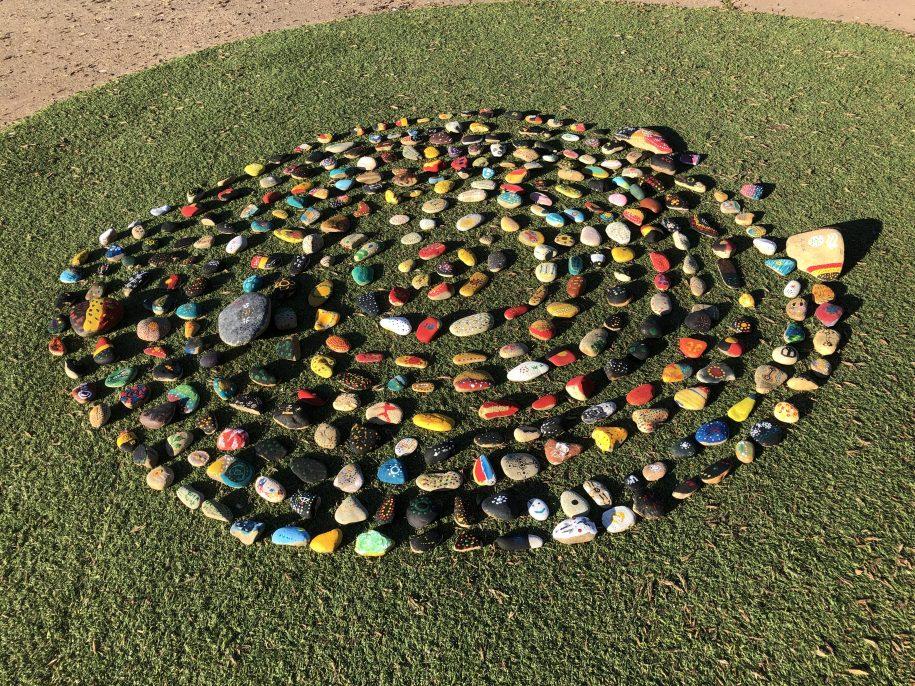
Leave a Reply